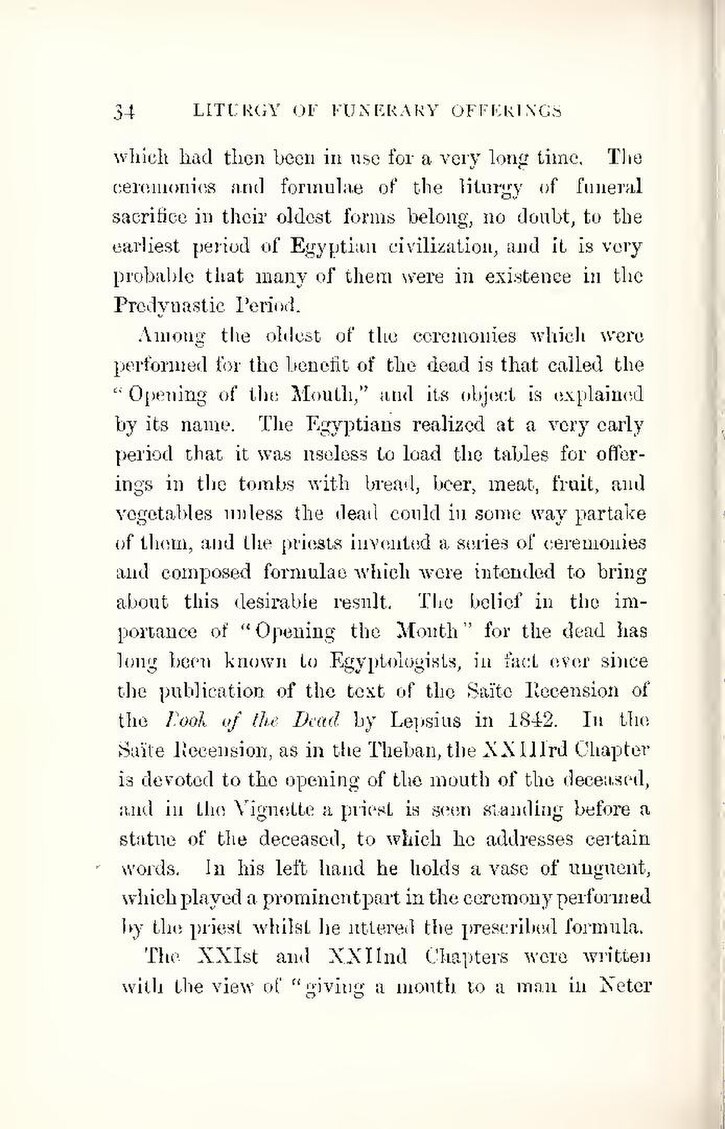which had then been in use for a very long time. The ceremonies and formulae of the liturgy of funeral sacrifice in their oldest forms belong, no doubt, to the earliest period of Egyptian civilization, and it is very probable that many of them were in existence in the Predynastic Period.
Among the oldest of the ceremonies which were performed for the benefit of the dead is that called the “Opening of the Mouth,” and its object is explained by its name. The Egyptians realized at a very early period that it was useless to load the tables for offerings in the tombs with bread, beer, meat, fruit, and vegetables unless the dead could in some way partake of them, and the priests invented a series of ceremonies and composed formulae which were intended to bring about this desirable result. The belief in the importance of “Opening the Mouth” for the dead has long been known to Egyptologists, in fact ever since the publication of the text of the Saïte Recension of the Book of the Dead by Lepsius in 1842. In the Saïte Recension, as in the Theban, the XXIIIrd Chapter is devoted to the opening of the mouth of the deceased, and in the Vignette a priest is seen standing before a statue of the deceased, to which he addresses certain words. In his left hand he holds a vase of unguent, which played a prominent part in the ceremony performed by the priest whilst he uttered the prescribed formula.
The XXIst and XXIInd Chapters were written with the view of “giving a mouth to a man in Neter
